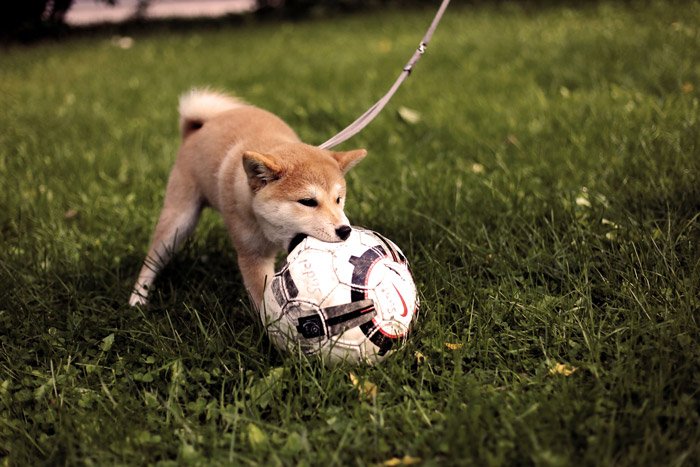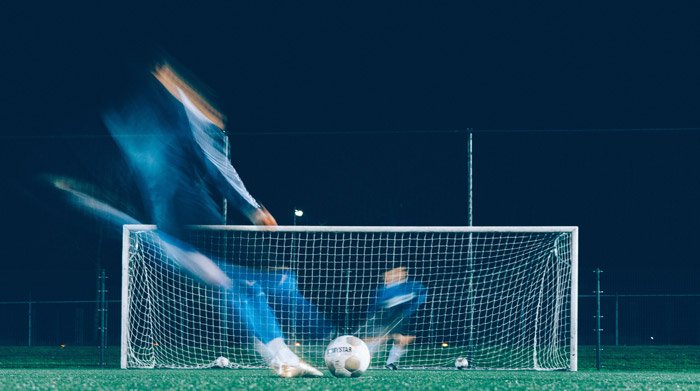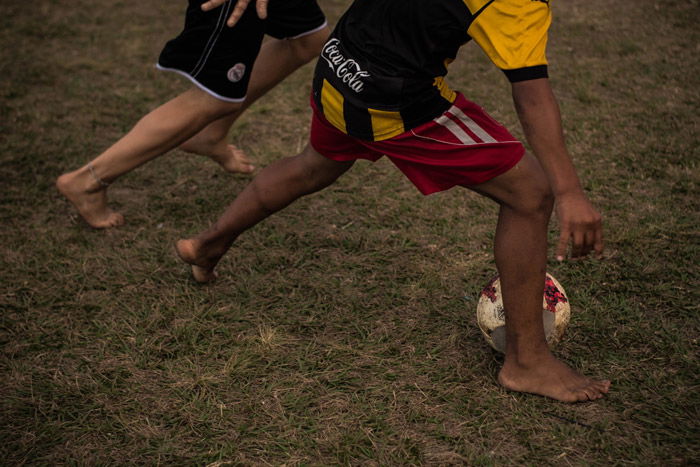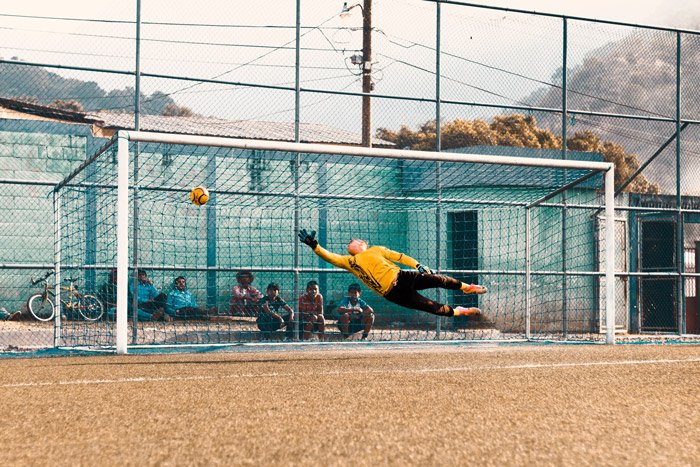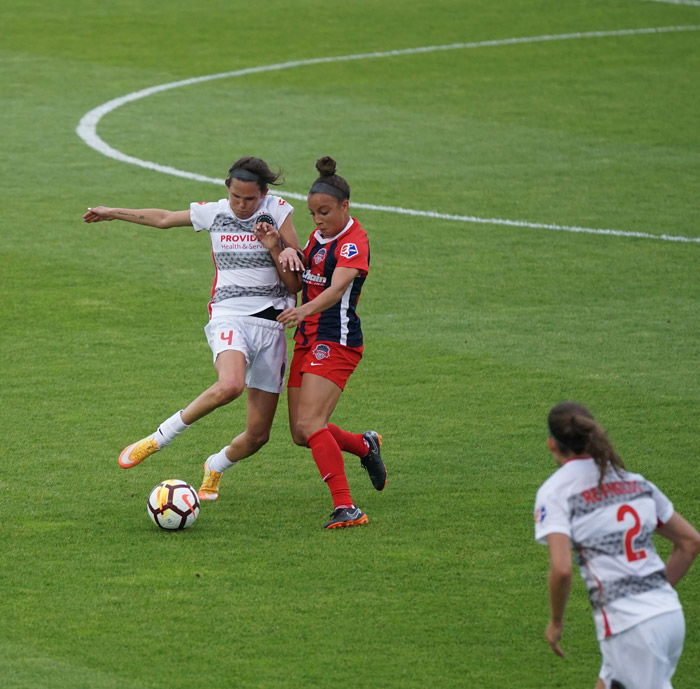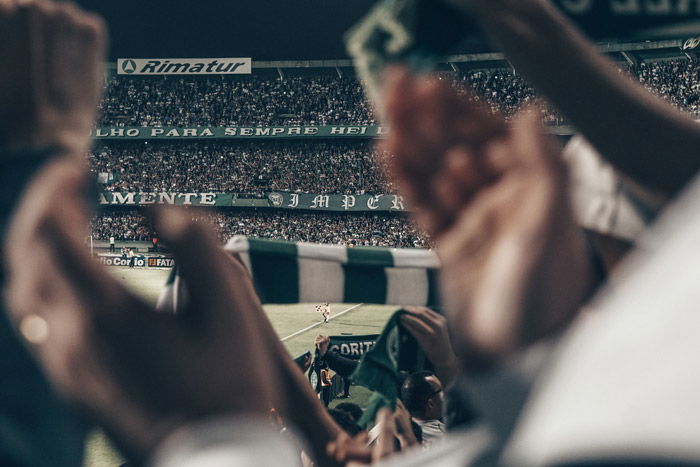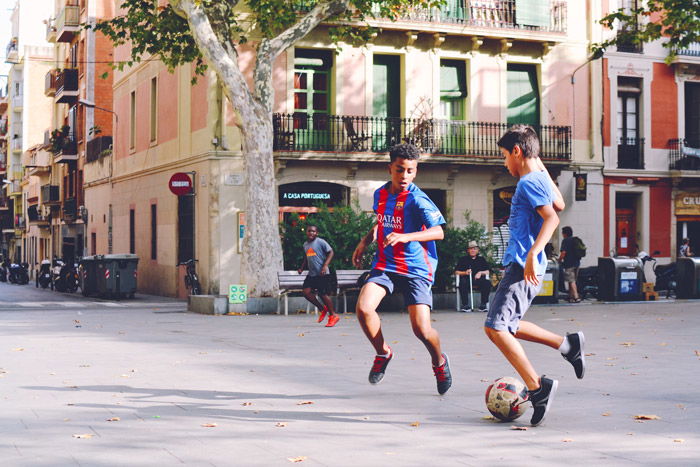Here are 10 soccer photography tips to ensure your next sports photography shoot is successful.
10. Soccer Photography: Using a Longer Lens
In much of sports photography, the longer the camera lens the better. It isn’t impossible to shoot soccer games with a shorter lens. But chasing the ball or relying on soccer players to bring the game closer to you can result in missed opportunities. A 200mm telephoto lens is a good start. Lenses that go into the 400mm range can prove even more useful. Using a teleconverter (otherwise known as an extender or multiplier) is another way to extend the reach of a lens. Keep in mind that teleconverters tend to magnify aberrations. They can also compromise your fastest apertures and focus speeds.
9. Shutter Speed
Soccer is a fast-moving sport with many components at play. To capture players in action and minimize motion blur, you’ll need a fast shutter speed. Start with a shutter speed of at least 1/800th of a second. Make sure you’re in manual mode. This reduces the effects of hand-held camera shake and freezes movement in a photo. On the other hand, you may be looking for a more artistic rendering of a soccer match. Experimenting with a slower shutter speed can produce interesting and unique results. Panning involves dialing down the shutter speed. It can go as low as anything between 1/30th and 1/125th of a second. The faster the subject, the faster the required shutter speed. Incorporating subject motion can also emphasize the fast pace of the game.
8. Aperture and ISO
Aperture regulates the amount of light that reaches a camera sensor and the depth of field in each image. To shoot a single-player, try shifting to f/2.8 if possible. This isolates the lone player from the background noise of the surrounding soccer field. To maintain the sharpness of multiple players in one frame, use a smaller aperture (bigger f-number). Once your aperture is set, use ISO to adjust the brightness of your exposure. If your images are too dark, increase the ISO. This increases the sensitivity of the sensor to light. Just keep in mind that the ISO value degrades images with digital noise if it’s set too high.
7. Auto Focus
The correct autofocus mode is an important aspect of all sports photography. Subjects in motion need autofocus that tracks movement to maintain sharpness. Switch your camera to settings like AI-Servo on a Canon camera or AF-C on a Nikon. Then half-depress the shutter actuator while aiming the camera lens at a moving subject. You’ll find that the autofocus will keep adjusting to maintain the focus on the subject in the viewfinder. Once you have lined up your shot, depress the shutter actuator all the way in to make the photograph.
6. Burst Mode
During the action of soccer photography, there’s a lot going on between each individual click of the shutter button. Burst mode is a camera setting where a number of photographs are made in quick succession. Burst mode is also known as continuous shooting mode, sports mode or continuous high-speed mode. Cameras with high continuous shooting rates increase the chance of capturing great action shots. With continuous shooting mode, you can depress the shutter button in anticipation of potential peaks in action. This way, you won’t have to rely on reflexes alone to capture an image the moment it occurs.
5. Get to Know the Game to Anticipate Key Moments
If you aren’t familiar with the ins and outs of soccer, try watching a few matches. Research is critical in figuring out the focal points of the game. A few examples of dramatic moments are;
Pre-game warm-ups on the field; Tackles, headers, and dives; Goals and goal deflections; Injuries and ‘injuries’; The moments after the final whistle.
Being familiar with soccer will allow you to intuit key moments in the match to photograph. It will increase your ratio of successful images.
4. Focus on the Crowd
No matter if it’s in a stadium or at the local oval on a Sunday, soccer isn’t just an event for the players. Fans of soccer are often boisterous and vocal for the whole duration of the game. When it comes to soccer, no one stays on the sidelines! For a more rounded series of images, take some time to capture the crowd too. Crowd reactions add depth to your narrative of the game.
3. Environmental Photography
Soccer is played in a huge variety of locations. Stadiums, dedicated sports ovals, high schools, open fields, streets… cosmonauts have even tried their hand at soccer in space! The fact that soccer can be played almost anywhere is a fundamental aspect of the game. You could be shooting at a dedicated sports facility or out on the street. Either way, make sure you document the environment the game is held in. Photograph aspects like the nets, ball, gear, terrain, and location. Doing so conveys the atmosphere of the event, providing context for your shoot.
2. Keep Both Eyes Open When Shooting
If you’re like me, you are probably in the habit of pressing one eye to the viewfinder and shutting the other. For fast-action games like soccer, there’s an old trick to keep from missing the action. Next time you’re shooting, try keeping both eyes open. It may be a little disorientating at first. Keeping both eyes open while one eye is on the viewfinder is a great way to stay on top of the action on the field. I’ve also found that this method makes it easier to maintain balance when panning. With both eyes open, you can see what is going on around you. You won’t miss moments about to occur just out of shot.
1. Move Around
It’s easy to stay in the same spot while everyone else is moving around you. When so much action is going on in front, staying put just seems to make sense. But a whole series of photographs taken from the one spot can be predictable. To maintain a good variety of images in your body of work for the day, shifting position is crucial. Don’t worry about physically chasing the soccer ball up and down the field. You’ll get too tired and miss other opportunities! Instead, try simple techniques like shooting from a low or high angle. This will create a variety of perspectives. Place the camera on the ground to get a ‘worm’s eye view’ of the game. Or stretch up high with camera in hand for an elevated viewpoint. You can also walk to different ends of the field to increase the diversity in your images. These simple adjustments give a viewer a sense of physicality and a unique insight into the game through your eyes.
Conclusion
Soccer is both a challenging and rewarding game to photograph. If you get the opportunity to photograph a game, immerse yourself in the culture of the event. Document the game as if your audience knows nothing about soccer. Capture the emotional intensity of both the players and spectators. Don’t forget to take environmental shots and take some time to enjoy the match yourself!
